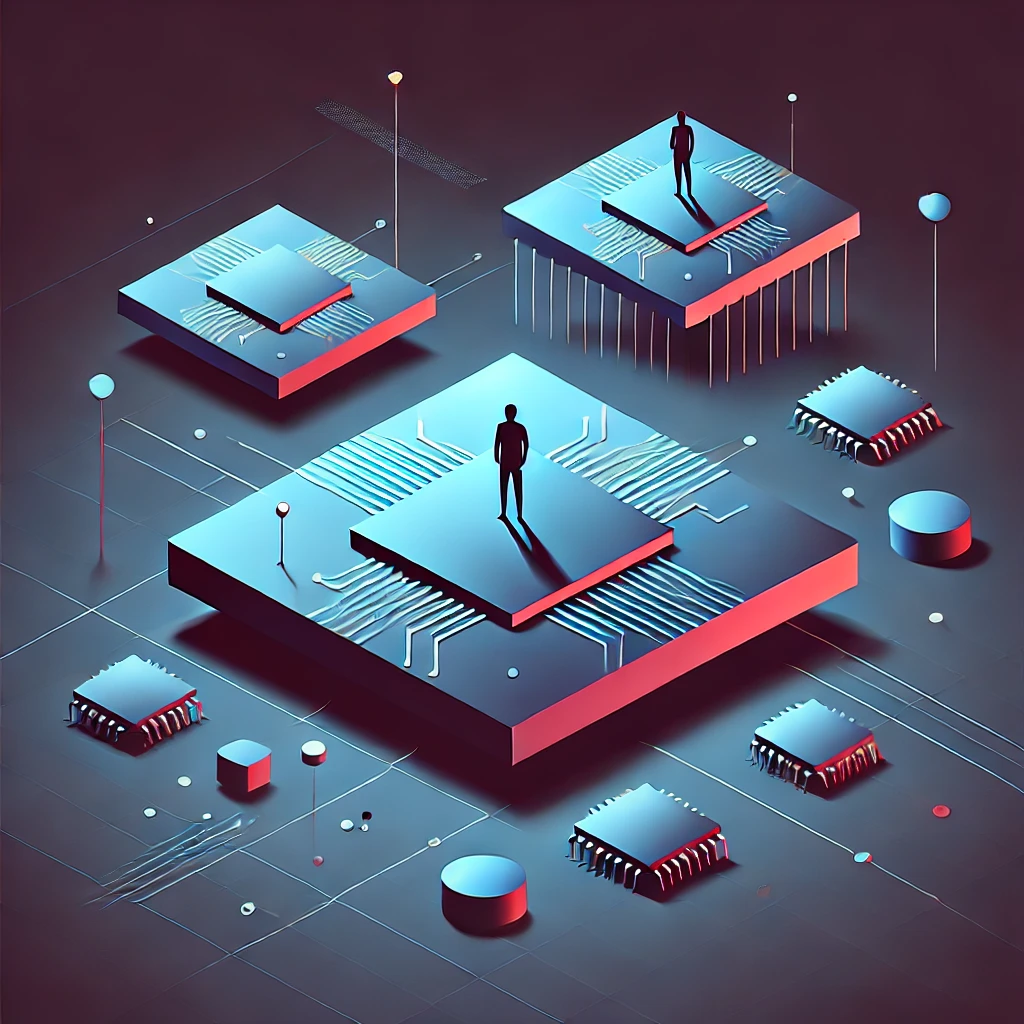UAV Technology
Senior researcher at 3D Robotics, Brandon Basso, on the history of UAVs, common misconceptions surrounding the...

Microchips, or chips, are electronic computing devices that process information as ones and zeros. These chips function using transistors, which are semiconductor devices that control the flow of electrical current. The critical element of a transistor is the p-n junction (where “p” stands for positive and “n” for negative), where two types of semiconductor materials with opposite conductivity meet.
Modern microchips can contain up to a billion transistors, providing significant computing power. These chips are the foundation of today’s computers and smart electronics.
The core of smartphones and laptops is monocrystalline silicon. Engineers build microchips on this silicon base, integrating electronic components like resistors, transistors, and capacitors. To prevent interference, each chip requires an insulator, usually a dielectric, to isolate transistors from each other and metal interconnections to link them together.
A transistor converts incoming current and transmits basic information as ones and zeros. Boolean algebra, which handles fundamental logical operations like negation, identity, addition, and intersection, processes these binary digits. Registers are configured for each logical function and combined into a single system, forming a processor or microcontroller. These components perform the necessary calculations. With billions of transistors on a single silicon chip, their configuration and placement are managed by computers rather than humans.
Silicon crystals for microchips are grown using the Czochralski method. A small piece of silicon is placed into molten silicon, and as it slowly rotates, the material solidifies into a cylindrical monocrystalline silicon structure. This cylinder is then sliced into several wafers. Various elements (such as arsenic, phosphorus, or boron) are added to the silicon to form the p-n junction, the fundamental component of the transistor. A silicon oxide film insulates the transistors, and metal interconnections link them.
Once the chip is encased in a DIP (dual-in-line package), the silicon crystal is connected to the microchip’s input and output pins. After soldering the crystal, which creates contact pads, a wire is bonded and connected to the DIP leads. The microchip is then encased in epoxy or plastic. The crystal is often mounted on a copper or gold substrate to dissipate heat, as the microchip processes a significant amount of energy per second, requiring an efficient cooling system.
While silicon monocrystals are the most common material for microchips due to their abundance on Earth, alternative materials like sapphire, carbon, gallium arsenide, and germanium are also used. Sapphire-based microchips, for example, are ideal for power electronics handling high currents and are frequently used in defence technologies. Germanium-based chips are more resilient to low temperatures, while gallium arsenide devices are suitable for high-frequency signals, such as those used in mobile communications and Wi-Fi.
Carbon is another promising alternative to silicon. It exists in three phases: semiconductor carbene, conductive graphite, and dielectric diamond, which can be utilized as a semiconductor. Carbon-based microchips offer a broad operating temperature range. Additionally, devices using carbon nanotubes eliminate the p-n junction, a common point of failure in traditional microchips.
Hybrid integrated circuits, combining conventional electronics with superconductors, are particularly intriguing. Superconductors eliminate ohmic losses (converting electrical energy into heat), enhancing energy efficiency. This innovation reduces the energy consumption per unit of processed information. Superconductors are the basis for devices like the SQUID (Superconducting Quantum Interference Device), a magnetometer capable of detecting extremely weak magnetic fields.
The production of microchips demands strict safety protocols. For instance, hydrofluoric acid, used in silicon processing, can burn nerve endings and dissolve bones. Photolithography involves carcinogenic solvents and additives, which can irritate the skin and mucous membranes.
When microchips are discarded, precious metals such as gold, silver, and platinum must be recovered. This process also requires adherence to environmental safety standards.
The primary function of a microchip is the fast and accurate processing of information, which depends on several parameters. One key factor is the clock frequency. Since individual transistors within a chip may vary, they must be synchronized. A quartz crystal is typically used as a frequency generator to ensure that all information is transmitted at a consistent clock rate. The higher the clock frequency, the more information can be processed. The entire system’s performance is also influenced by the resistive-capacitive load of the elements, which depends on both the number of transistors and the conductivity of their channels.
Microchips perform computing functions by interpreting and processing information expressed in binary (ones and zeros) and Boolean algebra. They are used in various devices, from motion sensors to machine vision systems and smart vacuums.
Before microchips became widespread, liquid or gas injectors in cars were mechanical. The nozzle was adjusted to inject fuel at a specific interval. Today, injectors have microcontrollers that manage fuel valves and regulate fuel consumption.
Microchips based on tin oxide are also used in humidity sensors. For example, a capacitor using porous tin oxide as a dielectric changes its capacitance when it comes into contact with water. An integrated circuit nearby analyzes the capacitance and determines the humidity level.
The most vulnerable part of a microchip is the p-n junction, the core of the transistor. A depletion region forms between the p- and n-type areas, with no free charge carriers. Suppose a high-energy particle, such as a quantum from the sun or another star, strikes this region. In that case, it introduces charge carriers, creating additional current and potentially disrupting or damaging the logic circuit.
Because of this vulnerability, vacuum tube-based computing machines have long been used for military purposes. A transistor-based receiver would fail during a nuclear explosion due to high-energy quanta, even if the device were far from the epicentre. In contrast, a vacuum tube receiver would continue to operate.
The p-n junction in microchips can also degrade naturally. As the chip operates, it generates significant heat, accelerating the diffusion of atoms in the metal connections and the impurities used to form the p- and n-junctions, eventually causing the p-n junction to disappear.
The future of microchips hinges on what happens when Moore’s Law no longer holds. Intel co-founder Gordon Moore observed that the number of transistors on a monocrystal doubles every 24 months, primarily due to the shrinking size of transistors. However, this process has a physical limit that will eventually be reached.
There are inherent limitations to the production of central processing units (CPUs). According to Gene Amdahl’s law, overall computing power increases when tasks are distributed among multiple processor cores. The practical application of this law—creating multi-core processors—sparked a revolution in microelectronics about a decade ago when Intel introduced the dual-core Core Duo processor. However, the same law also limits performance gains from multi-core processing.
Data centres, servers, and supercomputers require significant energy to process each unit of information. Therefore, reducing energy consumption, including cooling, is a crucial goal for the future of microchip technology.

Senior researcher at 3D Robotics, Brandon Basso, on the history of UAVs, common misconceptions surrounding the...

Physicist Susanne Yelin on the perfect lens, the way to achieve negative indexes of refraction, and the challe...

Physicist Susanne Yelin on atomic decay, wave interference, and ultracold polymolecules